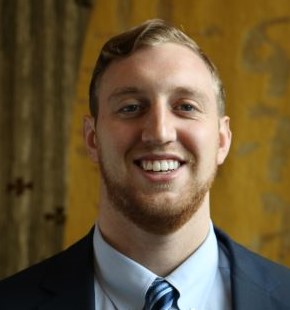 By: Jim Cline and Clive Pontusson
By: Jim Cline and Clive Pontusson
In Department of the Airforce, Arbitrator John Nicholas determined that a government employer had a right to set firefighter mustache standards because they had an effect on the employer’s ability to give fitness tests. The Union had filed a grievance because it felt the Department of the Air Force had applied the wrong rules under the CBA. The Arbitrator agreed that this was true, but also found that the union’s requested relief would incur additional costs—as a result, the best remedy was the employer simply applying the correct rule.
Local F-211 of the International Firefighters Union worked on an Airforce base in Oklahoma. Not surprisingly, there were many regulations that applied to all parts of their work. Among these was the requirement that they complete a “respirator fit test” to be able to work. The base stated that to take the test, a male firefighter had to comply with the Air Force grooming standard, which stated that facial hair cannot interfere with the respirator—this meant a moustache had to be trimmed closely to the corners of the mouth. The labor agreement in force between the union and the Air Force stated a slightly different standard that apparently allowed for a larger moustache. Finally, an OSHA regulation stated that facial hair was acceptable so long as it did not interfere with the mask. The Union objected that the Air Force was wrongly applying the Air Force regulation, because the Union had bargained for the different and more relaxed standard contained in the labor agreement. If all this talk about moustaches is sounding a bit silly—you’re probably not a firefighter.
The Union demanded that the grooming regulation in the labor agreement be implemented, and claimed that the Air Force was violating the CBA by failing to do so. It argued that the more general Air Force regulation didn’t trump the grooming guidelines they had bargained for. As a remedy to the current situation, the union made several requests, including providing a 3rd party to perform the tests, or purchasing equipment and provide training so the firefighters could conduct the testing themselves.
The Air Force started by admitting that it was wrong to apply the general Air Force standard to the union, and that it would be willing to use the standard present in the collective bargaining agreement. However, the Air Force argued that the determination of whether facial hair was interfering with the test was up to the person administering it, not the employee being tested. It also argued that the Union’s requested relief would be unreasonable, because it would cost money to hire a 3rd party or buy additional equipment.
The Arbitrator found this case “unique,” not because of its subject matter, but because the Air Force admitted that its basis for denying the grievance (application of a regulation not in the CBA) was improper. He explained that:
Both parties are in agreement that Bargaining Unit Employees undergoing the subject fit test must possess facial hair that in no way obstructs a seal between apparatus and the surface of the individual’s skin. Said requirement is evident and plainly present in the controlling provisions.
As a result, he ordered the Air Force to use only the regulation present in the CBA:
Any attempt by an individual conducting a fit test to prohibit a Bargaining Unit Employee from participating in the respirator portion of the fit test is unacceptable and must cease.
However, the Arbitrator agreed with the Air Force and found the Union’s requested relief to be unreasonable. He pointed to regulations that clearly stated that Air Force personnel would conduct these tests, and that the tester has discretion to determine whether facial hair is interfering with the test. The moustache battle will likely continue, but it must do so in compliance with the labor agreement the firefighters bargained for.
This case demonstrates the well accepted principle that the specific language in a CBA is going to trump an employer policy manual. In certain instances, such as where the CBA language is ambiguous, policies or other practices might be relevant to aid in interpreting the CBA language, that issue wasn’t present here. In this case, the employer had simply ignored the CBA. But it wisely recognized that by the time of the hearing and focused on its more winnable claim that the remedy should still allow the employee (rather than individual employees) make the judgment about whether the grooming standard was met. Certainly if the employer exercise poor judgment in assessing the moustache’s, another round of grievance is likely.
**Visit our Premium Website for more information on General Principles of Contract Interpretation **



